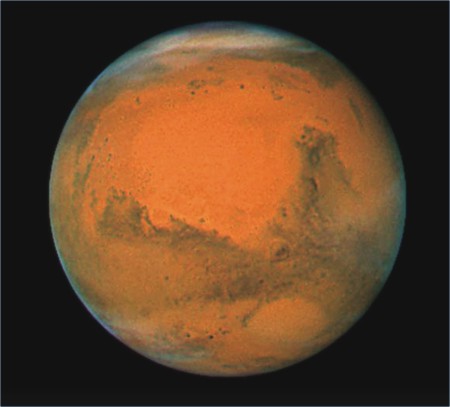Science Feature
Mars is closer to Earth
The Hubble Space Telescope took advantage of the opportunity, too, photographing the red planet earlier this month. The images were pasted together into a video showing Mars' full rotation. The red planet is now the brightest "star" in the evening sky, easily visible by mid-evening until dawn. It comes closest to the Earth today at 6:46 p.m. EST, when it will be 54,783,381 miles (88,165,305 kilometers) from us. Mars looks like an orange star to the naked eye, but it's revealed as a disk with many features in modest telescopes. It will put on a good show all month. Although 2003 offered astronomers a view of Mars 20 million miles (32 million kilometers) closer than this year's approach, Hubble's most recent detailed look at the red planet shows it's free of dust storms. However, ice crystal clouds in the northern and southern polar caps can be seen. Two dark patches lie just south of the equator in Hubble's view: The large triangular shape to the right is Syrtis Major while the horizontal lane to the left is Sinus Meridiani. NASA's Mars Exploration Rover named Opportunity landed in the western part of this region in January 2004. As the Martian winter closes in, Opportunity's dust-laden companion called Spirit is scouting out a place to survive the poorly lit winter for about six months.
Source: space .com

|
